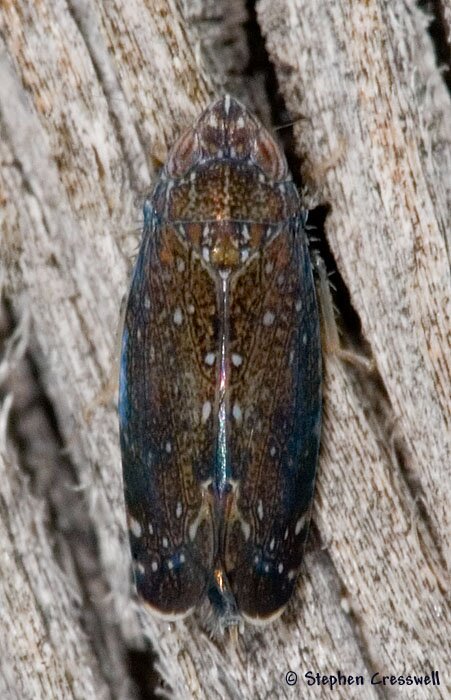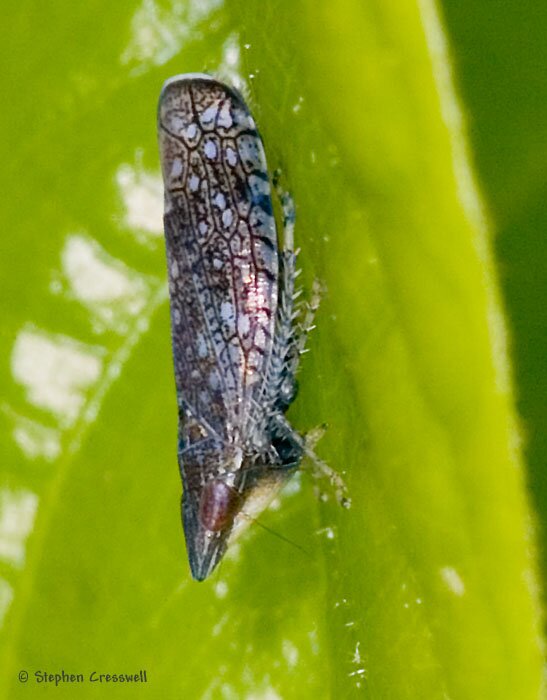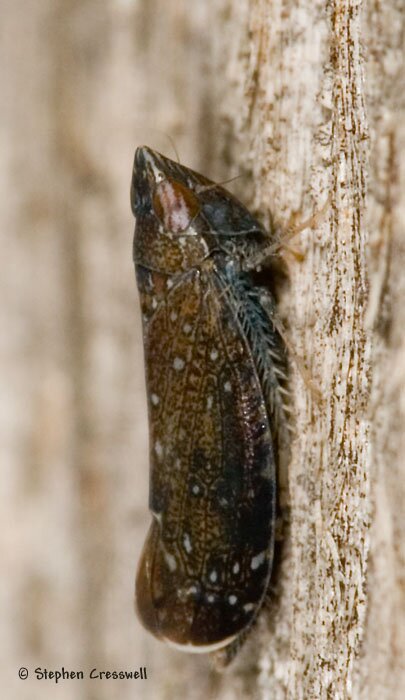
Family: Cicadellidae
Subfamily: Deltocephalinae
Length: 3.5-5.5 mm
Nelson and Morgan (1982) conducted a life history study of one Scaphytopius species, S. nitridus. The study indicated that the eggs go through an incubation period of about eight days. Overall, development from egg to adult took an average of fifty days. These times are longer in cool temperatures and may be shorter under warm conditions.
A single female may give rise to as many as 353 nymphs, though 114 was the average. Females tended to live twice as long as males, although the greatest longevity of a male (156 days) was similar to the greatest longevity of a female.
Even in protected laboratory conditions, females stopped laying eggs between October and February, suggesting there is a required diapause before reproduction can resume.
A study of two Scaphytopius species in North Carolina indicated that eggs hatch on the forest floor from the host plants fallen leaves of the previous year. These early-Spring hatchlings continue to feed in the protected forest, on plants such as Creeping Blueberry. Eventually the first and second generation leafhoppers moved into higher shrubs in open areas, but in the year's third generation the hoppers returned to the more protected forest environment.

The various Scaphytopius species have rather catholic tastes in food plants, feeding on a variety of both woody and herbaceous species. Leafhoppers in this genus have been reported to carry diseases to crops ranging from celery to alfalfa to peaches.
Other Scaphytopius spp. shown on the Insects of West Virginia site:



